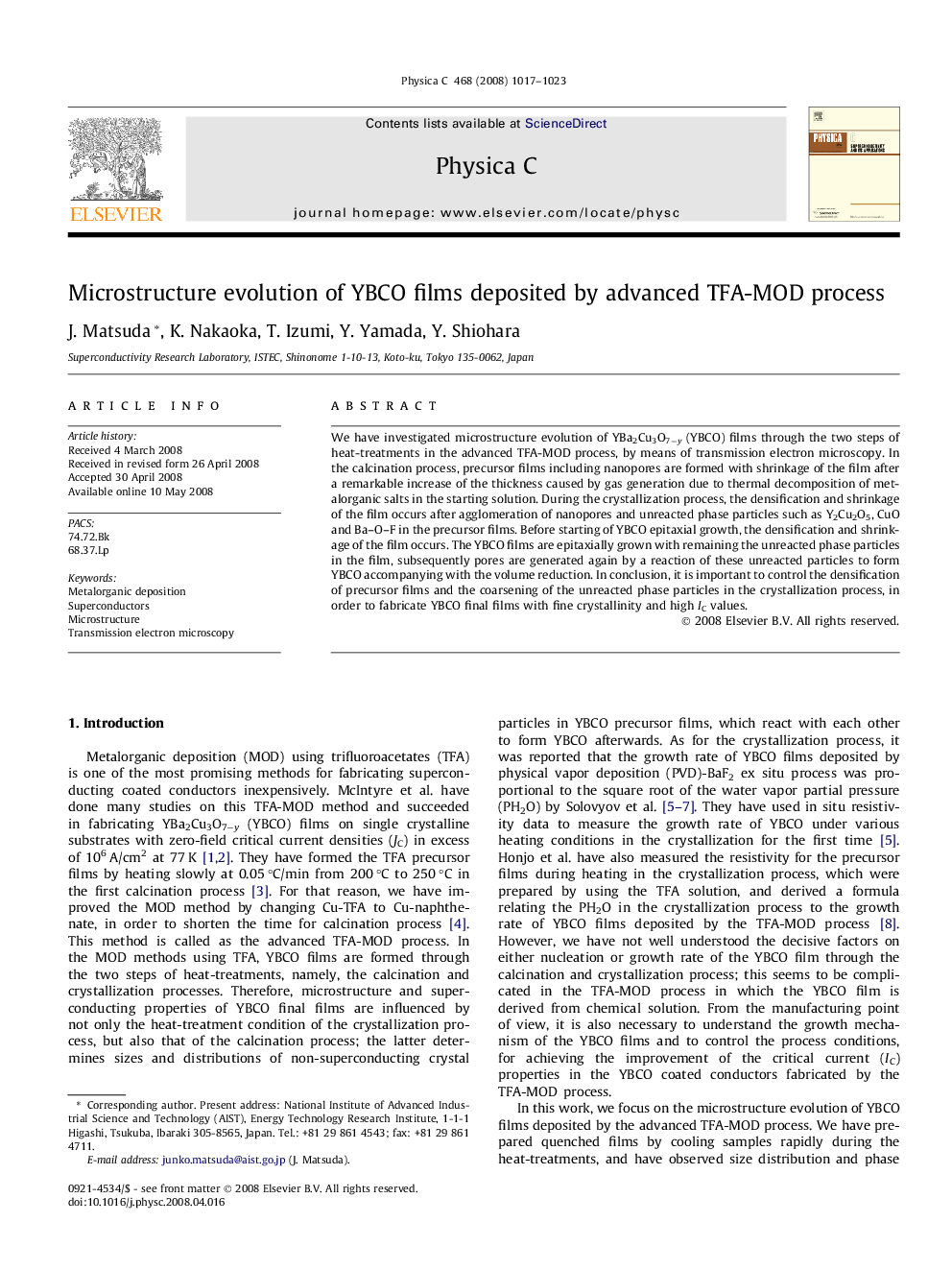| Article ID | Journal | Published Year | Pages | File Type |
|---|---|---|---|---|
| 1819158 | Physica C: Superconductivity and its Applications | 2008 | 7 Pages |
Abstract
We have investigated microstructure evolution of YBa2Cu3O7ây (YBCO) films through the two steps of heat-treatments in the advanced TFA-MOD process, by means of transmission electron microscopy. In the calcination process, precursor films including nanopores are formed with shrinkage of the film after a remarkable increase of the thickness caused by gas generation due to thermal decomposition of metalorganic salts in the starting solution. During the crystallization process, the densification and shrinkage of the film occurs after agglomeration of nanopores and unreacted phase particles such as Y2Cu2O5, CuO and Ba-O-F in the precursor films. Before starting of YBCO epitaxial growth, the densification and shrinkage of the film occurs. The YBCO films are epitaxially grown with remaining the unreacted phase particles in the film, subsequently pores are generated again by a reaction of these unreacted particles to form YBCO accompanying with the volume reduction. In conclusion, it is important to control the densification of precursor films and the coarsening of the unreacted phase particles in the crystallization process, in order to fabricate YBCO final films with fine crystallinity and high IC values.
Keywords
Related Topics
Physical Sciences and Engineering
Physics and Astronomy
Condensed Matter Physics
Authors
J. Matsuda, K. Nakaoka, T. Izumi, Y. Yamada, Y. Shiohara,
